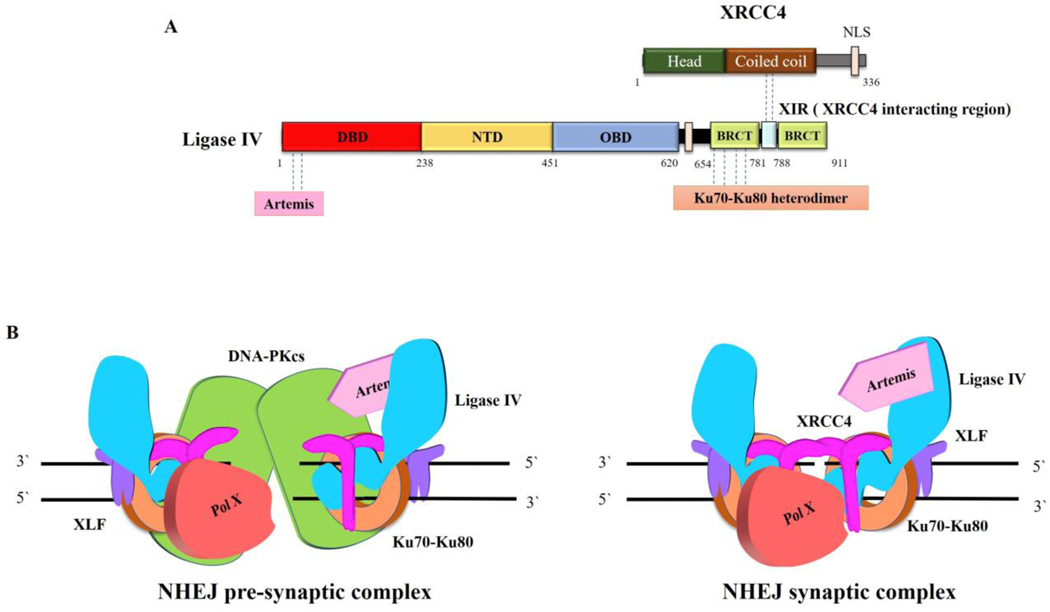Fig. 5. LigIV protein partners.
A. Linear schematic of LigIV polypeptide showing the binding sites for Artemis, Ku70/Ku80 and XRCC4. B. The Ku heterodimer ring (orange) threads onto DSB ends and then recruits other core NHEJ components, DNA PKcs (green), Ligase IV (blue)/XRCC4 (magenta) and XLF (purple) to form a pre-synaptic complex in which the DNA ends are brought together but no aligned (left panel). Other factors, such as Artemis (cyan) and DNA polymerase family X members μ or λ (red), that may be needed to modify ends prior to ligation are also recruited. In the pre-synaptic complex, the DNA ends are not accessible for processing and ligation. There is predicted to be a transition involving autophosphorylation of DNA PKcs that results in a conformational change in DNA PKcs and/or the its departure from the complex, resulting in the formation of the synaptic complex (right panel), in which the DNA ends are aligned and accessible to interactions with Ligase IV and end processing enzymes.

